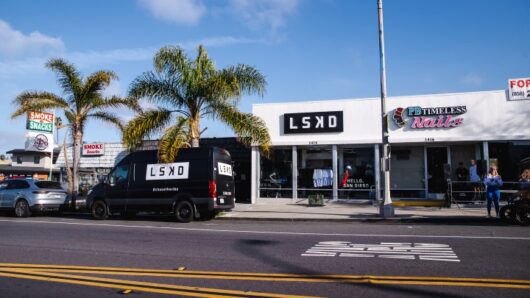 Retail conglomerate Wesfarmers has seen its first-half profit drop 86.6 per cent to $212 million, following the $1.3 billion impairments flagged against its ailing hardware UK venture and Target discount department stores.
Retail conglomerate Wesfarmers has seen its first-half profit drop 86.6 per cent to $212 million, following the $1.3 billion impairments flagged against its ailing hardware UK venture and Target discount department stores.
Net profit after tax (NPAT) for the half also decreased 2.7 per cent to $1,535 million, excluding the impairments, with Coles supermarket earnings before tax falling 14.1 per cent to $790 million following a slowdown in comparable food and liquor sales growth – from 1.3 per cent a year ago to 0.9 per cent.
The impairments, write-downs and provisions comprise BUKI’s $931 million and impairments in Target of $306 million.
“Higher earnings across a majority of the group’s businesses were offset by losses in BUKI and lower Coles earnings following planned investments in price and service,” said Wesfarmers managing director Rob Scott.
Overseas pain, local gains
Bunnings United Kingdom and Ireland (BUKI) reported a loss before interest and tax of £97 million ($165 million) for the half, compared to a loss of £28 million ($48 million) in the prior corresponding period.
Revenue for BUKI decreased 15.5 per cent to £517 million (15.7 per cent to $875 million).
“The loss for the half reflected continued trading and execution challenges as a result of the rapid repositioning of Homebase following the acquisition,” Scott said. “The management team has been strengthened and a review is underway to identify the actions required to improve shareholder returns.”
In addition to BUKI’s reported loss, pre-tax significant items of £531 million ($931 million) were recorded in the half, reflecting the current trading performance of Homebase and a moderated outlook for BUKI.
Wesfarmers said a review of BUKI is ongoing and an update will be provided to the market in June 2018, while the short-term focus for the business is on improving the trading performance of Homebase.
Back home, Bunnings Australia and New Zealand Revenue for BANZ increased 10.2 per cent to $6,566 million for the half, with earnings before interest and tax (earnings or EBIT) increasing 12.2 per cent to $864 million.
“BANZ achieved another very strong result during the half, underpinned by continued sales growth across all of its market segments, productivity initiatives and operating leverage,” Scott said.
“The solid momentum in BANZ reflected continued strong execution of its strategy, with further investments made in customer value, product ranges, the store network and digital. BANZ’s return on capital increased during the period and continued to be a strong characteristic of its performance.”
Coles’ earnings decline
Coles’ earnings decreased 14.1 per cent to $790 million for the half, withWesfarmers attributing the decline in earnings to the annualisation of investments made in the customer offer in the 2017 financial year, lower property earnings due to a one-off gain in the prior year, lower financial services earnings following the sale of Coles’ credit card receivables in February 2017 and lower fuel earnings.
“Coles maintained good sales momentum during the half, with transaction growth accelerating in the second quarter and reaching the highest level of quarterly comparable transaction growth in six quarters,” Scott said. “The business continued to improve its customer offer across value, quality, product innovation and service, resulting in overall improvements in customer satisfaction metrics.
“Liquor progressed its transformation, continuing to generate positive comparable sales growth, while Coles Express’ earnings decreased due to changes in the commercial terms of its fuel supply arrangement.”
Kmart masks Target slump
In the group’s department stores division, revenue increased 3.2 per cent to $4,769 million, with continued strong growth in Kmart partially offset by lower sales in Target.
Department Stores’ earnings increased 7.2 per cent to $415 million, the highest level of combined Kmart and Target first half earnings since the 2010 financial year.
“Kmart invested significantly in the customer offer during the half, delivering greater value for customers and driving continued growth in volumes,” Scott said.
“Target stabilised its earnings through productivity initiatives and improved trading margins, while continuing to reposition its merchandise offer. Good capital disciplines resulted in a strong cash result for the Department Stores division.”
Officeworks continues to perform
Officeworks’ revenue increased 9.7 per cent to $1,017 million, with earnings also increasing 9.7 per cent to $68 million. “Strong sales growth, coupled with effective cost control, delivered an increase in return on capital of 1.8 percentage points to 15.7 per cent,” Scott said. “Growth was driven by continued improvements in the core offer, complemented by new and expanded product ranges, improvements in layouts and store design, and further enhancement of the omnichannel offer.”
Three new stores were also opened during the half. At the end of December 2017 there were 165 stores operating across Australia.
Gross capital expenditure of $1,004 million was $80 million or 8.7 per cent higher than the prior corresponding period, which Wesfarmers said was mainly due to the acquisition of the rights to the Kmart brand name in Australia and New Zealand for $100 million, and additional BANZ store openings, partially offset by lower expenditure in Coles due to the timing of store refurbishments.
Hianyang Chan, senior research analyst at Euromonitor International said Wesfarmers decision to purchase Homebase in February 2016 might prove to be a costly mistake.
“As the Bunnings unit in the UK and Ireland continues to struggle, it is expected that the business unit will experiment with new concepts in a bid to revitalise sales for the division. However, they may to continue to face headwinds as strong price competition from competitors such as B&Q will continue to place pressure for the division,” he said.
Chan said Bunnings Australia continued to maintain strong year-on-year growth as Australians continue their love affair with the DIY trend.
“The division is set to embrace the online revolution by offering a special order range, improving on in-store experience and on-shelf availability and better engagement with the community. As Bunnings Australia remains the undisputed leaders in the Home improvement and Gardening stores in Australia, this signals their continuing intentions to remain relevant with the evolving consumer purchasing habits and solidifying their position in the market.”
According to Chan, Woolworths transformation strategy to improve on-store format, customer engagement, range and prices has proven to be working in their favour.
“It will be vital for Coles to focus on a renewed interest to create better experiences and ranges to maintain their foothold in the highly competitive grocery industry. As phantom or exclusive brands continue to gain further acceptance and popularity in Australia, it is expected that the supermarket giant will increase efforts to launch their private label ranges.”
Access exclusive analysis, locked news and reports with Inside Retail Weekly. Subscribe today and get our premium print publication delivered to your door every week.





